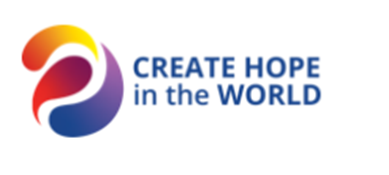
POLIO: This Week Jan 22
Wild poliovirus type 1 and Circulating vaccine-derived poliovirus cases
| Total cases | Year-to-date 2020 | Year-to date 2019 | Total in 2019 | |||
|---|---|---|---|---|---|---|
| WPV | cVDPV | WPV | cVDPV | WPV | cVDPV | |
| Globally | 1 | 0 | 7 | 1 | 165 | 280 |
| —In Endemic Countries | 1 | 0 | 7 | 1 | 165 | 36 |
| —In Non-Endemic Countries | 0 | 0 | 0 | 0 | 0 | 244 |
Polio is caused by a human enterovirus called the poliovirus. Polio can interact in its host in two ways:
- Infection not including the central nervous system, which causes a minor illness with mild symptoms
- Infection including the central nervous system, which may cause paralysis
Less than 1% of poliovirus infections result in paralysis. The virus is most often spread by the faecal-oral route. Poliovirus enters through the mouth and multiplies in the intestine. Infected individuals shed poliovirus into the environment for several weeks, where it can spread rapidly through a community, especially in areas of poor sanitation.
The poliovirus consists of an RNA genome enclosed in a protein shell called a capsid. There are three serotypes of wild poliovirus type 1, type 2, and type 3 each with a slightly different capsid protein. Immunity to one serotype does not give confer immunity to the other two. Outbreaks of poliovirus were largely unknown prior to the 20th century. However, with improved sanitation in the 20th century, the average age at which individuals were exposed to poliovirus increased. With progressively declining protection from maternal antibodies, poliovirus infection increasingly resulted in paralysis.
Type 2 poliovirus was declared eradicated in September 2015, with the last virus detected in India in 1999. Type 3 wild poliovirus has not been detected anywhere in the world since November 2012.
Polio this week as of 22 January 2020
- The GPEI Polio Partners Group convened the eighth annual technical workshop on 6 December 2019 where a global overview of the status of poliovirus detection was presented among other polio updates. The meeting presentations are now available here.
- Summary of new viruses this week (AFP cases and environmental samples):
- Afghanistan: one WPV1 case and three WPV1-positive environmental samples
- Pakistan: two WPV1 cases, four WPV1-positive environmental samples and six cVDPV2 cases
- Democratic Republic of the Congo (DR Congo): ten cVDPV2 cases
- Côte d’Ivoire: two cVDPV2 positive environmental samples
- Ghana: two cVDPV2 positive environmental samples
- Malaysia: two cVDPV1 cases
- Philippines: two cVDPV2 cases and two cVDPV2 positive environmental samples
- Togo: one cVDPV2 case
| Countries | Year-to-date 2019 | Year-to-date 2018 | Total in 2018 | Onset of paralysis of most recent case | ||||
|---|---|---|---|---|---|---|---|---|
| WPV | cVDPV | WPV | cVDPV | WPV | cVDPV | WPV | cVDPV | |
| Afghanistan | 0 | 0 | 2 | 0 | 29 | 0 | 7-Dec -2019 | NA |
| Pakistan | 1 | 0 | 5 | 0 | 136 | 18 | 03-Jan -2020 | NA |
WPV1 Wild poliovirus type 1
WPV2 Wild poliovirus type 2
WPV3 Wild poliovirus type 3
cVDPV Circulating vaccine-derived poliovirus
cVDPV1 Circulating vaccine-derived poliovirus type 1
cVDPV2 Circulating vaccine-derived poliovirus type 2

